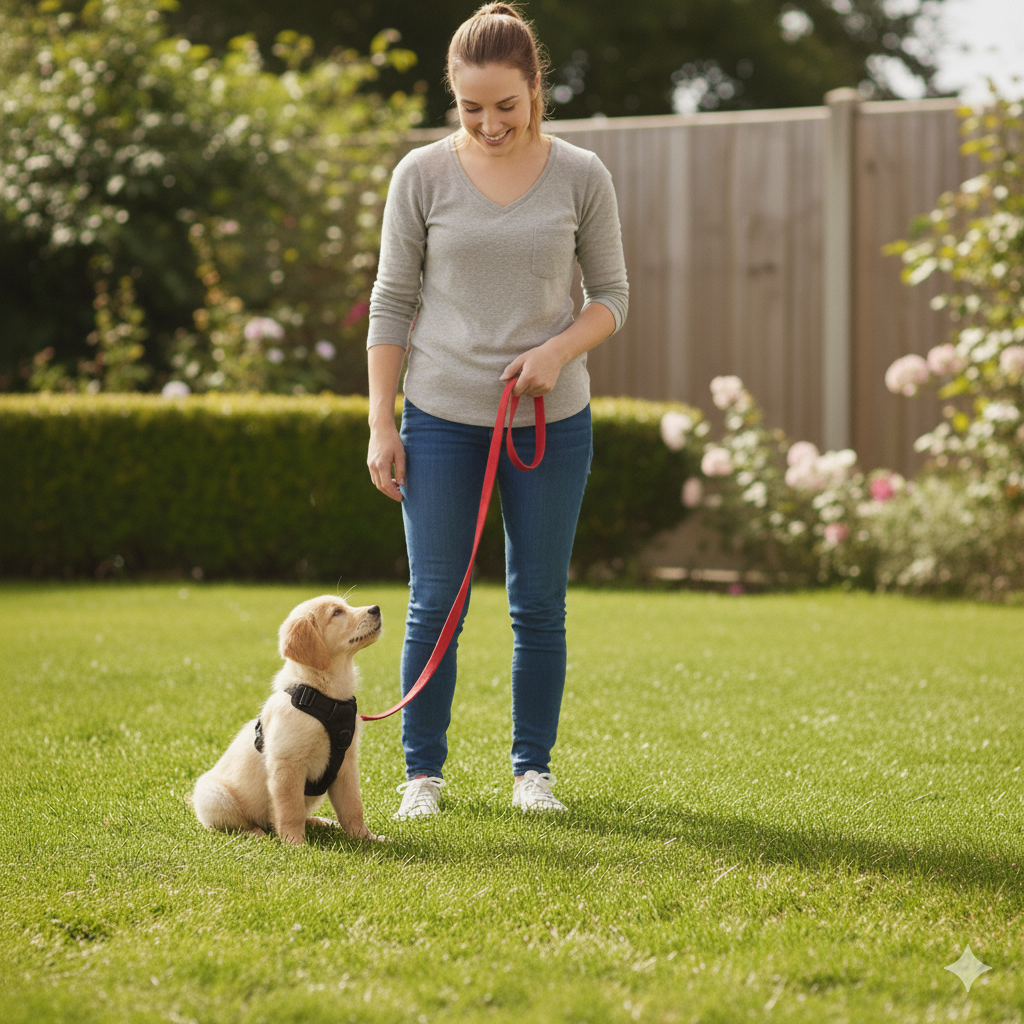How to housetrain your puppy
What you’ll need:
High-value treats
Enzymatic cleaner
Toilet training is often one of the first and most pressing challenges new puppy owners face. While it can feel overwhelming, success comes down to a simple formula: consistency, patience, and positive reinforcement.
1. Preparations
Set up a puppy-proofed zone, a space cordoned off or a small room with a baby gate, for when you can’t actively supervise your puppy. This will prevent accidents in other areas of the house and teach them to stay in a clean space.
Also, identify a space outside your home for toilet breaks. The scent will encourage your puppy to use the same area in the future. You can take them on a lead to this spot, even if it’s in your own garden, to help them learn where they are supposed to go and prevent them from getting distracted.
When they go to the toilet outside, give them encouraging praise and a treat—you want to make the association of going outside a positive one that they will be rewarded for. Once they have finished, you can resume play—you are teaching them that the toilet comes before play.
2. Set up a schedule
Dogs thrive on routine. As a general rule of thumb, puppies can hold their bladder for about one hour for every month of their age. To be safe, it is best to take them out much more frequently.
To start, take your puppy for a toilet break at the following times:
First thing in the morning (immediately upon waking)
Last thing at night (before bedtime)
After every nap
After every meal
After a drink of water
After playing or getting excited
Every 1-2 hours in between planned breaks
To prevent accidents at nighttime:
Limit water intake an hour or two before bedtime.
Take them outside right before you go to bed.
For the first few weeks, set an alarm to take your puppy out in the middle of the night (remember the rule of thumb that puppies can only hold their bladder for approximately one hour for every month of their age).
Crate training supports house training, as dogs are instinctively reluctant to soil their sleeping area. If they repeatedly have accidents in their crate, consider if the crate might be too large or if they are being left in the crate for too long. Consult your veterinarian if this is a recurring problem, as they may have a medical issue.
3. Supervision
When your puppy is not in their puppy-proofed zone, they should be with you. That way, you can keep an eye out for signs they need to go to the toilet.
Those signs might look like:
Circling or sniffing the floor
Whining or barking
Heading toward a door
Suddenly leaving the room or a play session
4. Accidents happen
If your puppy begins to go inside, clap or make a noise to interrupt them, then immediately pick them up and take them outside. When they finish outside, reward them with praise and a treat. Use an enzymatic cleaner designed to neutralise pet urine and faeces odours to prevent them from using that spot again.
Do not scold them or get frustrated. Accidents are a normal part of the process. Learn from the experience and get them outside sooner next time.
By following this plan and being consistent, you will build a solid routine that your puppy will quickly learn. With time, their bladder control will improve and accidents will become a distant memory. By remaining patient and consistent, you will not only achieve a clean home but also strengthen the bond of trust and communication with your puppy.
Check out our other blogs in our puppy training series:
Join the waitlist for early access to Sit Happens. We’re building the ultimate dog training app to make dog training easier and more fun than you can imagine.
